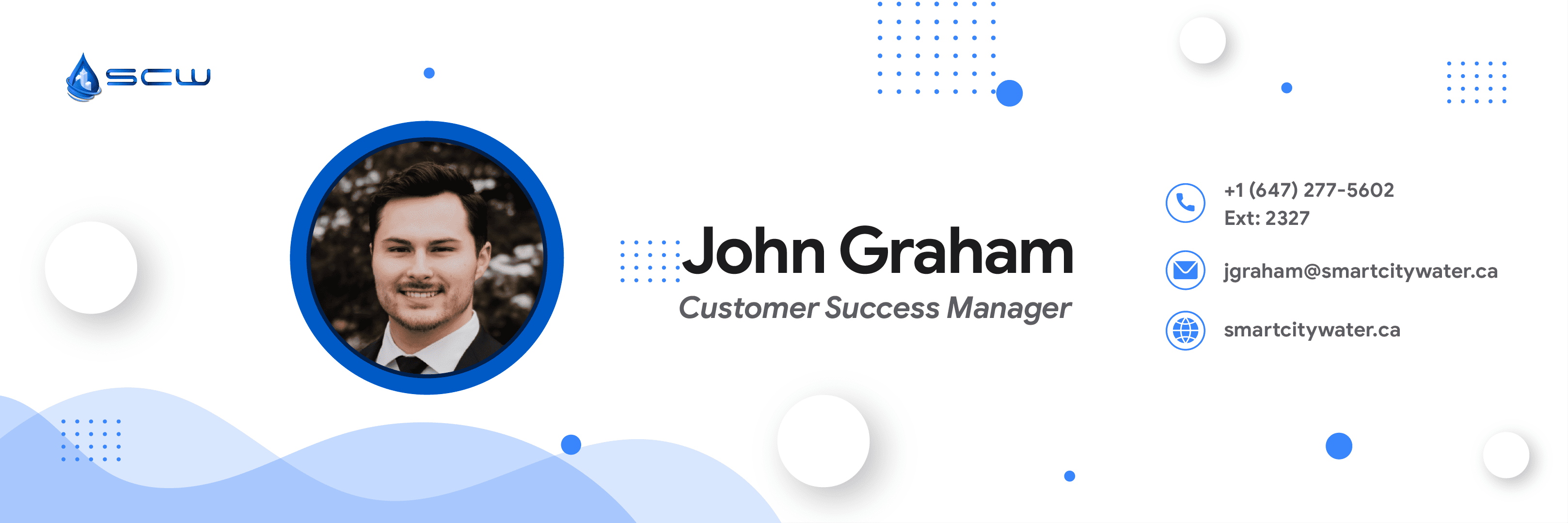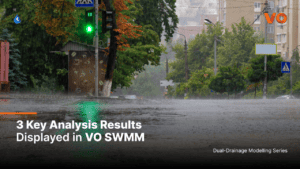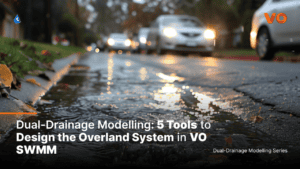🌊 Working with Different Scenarios 🌊

Term Definitions
Land Use: In terms of hydrologic analysis, land use refers to the various types of land surfaces and their corresponding impact on runoff generation, flow, abstractions, and runoff generated within a watershed. Primary land uses include rural, urban, and mixed. The land use can significantly influence the quality and quantity of water generated during a storm. By defining different land use scenarios in VO OTTHYMO, users can observe how changes to land use affect flows, volumes, and quality of water, allowing for informed decisions to implement controls.
Controls: VO OTTHYMO provides powerful commands that modify – or ‘control’ negative impacts of land use changes. For example, users can implement ponds or Low Impact Development (LID) technologies, like soakaway pits, infiltration chambers, rain gardens, green roofs, etc., to effectively manage water quality, erosion, and flooding.
Climate: Climate data (precipitation and temperature) control the water balance and rates in an area. In VO OTTHYMO, users select climate data sets as single events or continuous data and apply this to a defined drainage network to create simulation scenario runs. This data includes design storms, regional storms, and continuous longer-term precipitation, temperature, and evaporation time series. Climate (weather) data are inputs in the form of synthetic data (theoretical design storms) or they are observed historical events. Regulatory policies dictate the return period in years (probability of occurrence during a given year), such as 1 in 100 years (1% probability of occurrence).
3 Different Scenarios in VO OTTHYMO
You can define different scenarios by creating and duplicating existing ones and modifying key variables. For example, changes in land use and imperviousness, pond storage size, LIDs, channel dimensions, etc., will affect flows, volumes, flooding potential, erosion, etc.
1. Land use:
A) Water Quality Scenarios: To analyze water quality for the purpose of comparing, simply define the land use percentage for each sub-catchment using water quality data from the Resource Library. This data allows you to calculate important parameters like Total Suspended Solids (TSS) and Total Phosphorus (TP).
B) Runoff Purposes Scenarios: For runoff analysis, changes in the US Soil Conservation Service (SCS) Curve Number (CN) affect the water abstractions and resulting runoff rates. The SCS Curve Number (CN), is defined based land use types, soil types, and Antecedent Soil Moisture Condition (AMC). VO OTTHYMO uses parameters such as Total Imperviousness (TIMP) and Directly Connected Imperviousness (XIMP) to increase the imperviousness and modify the connection between pervious and impervious surfaces for macro-level analysis of roof areas (indirectly connected impervious areas) and road/paved areas.
2. Controls:
VO OTTHYMO uses ponds and LIDs, such as Soakaway Pits, Infiltration Chambers, Porous Pavement, Rain Gardens, and Green Roof to increase water abstraction or runoff losses (reducing runoff volumes, flooding and erosion, and contaminants to receiving water bodies). These controls store, filter, and infiltrate stormwater runoff.
3. Climate:
Creating a simulation run involves combining the drainage network (scenario) with the appropriate climate data, such as design storms, regional storms, or long-term time series data. Our Resource Library provides a comprehensive collection of climate data to aid in simulation modelling.
Application in Simulation Modelling
Scenario Exploration: VO OTTHYMO enables water resources planners and engineers to evaluate multiple scenarios to determine the most effective water management strategy for a watershed or sub-watershed basis.
Water Quality Analysis: By defining land use percentages and incorporating water quality data, our model facilitates accurate water quality assessments.
Efficient Runoff Analysis: The model’s ability to calculate CN based on land use and other factors streamlines runoff analysis, improving flood prediction and management efforts.
Conclusion
VO OTTHYMO is a hydrologic modelling software that helps users work with different scenarios, making it a valuable tool for water resources planners, engineers, and decision-makers. By understanding the role of land use, controls, and climate data, users can optimize their water management strategies and drive positive change in water resources management.
🌊 Experience the simplicity and power of VO as you create accurate models.💡
To request a VO OTTHYMO license, click HERE





